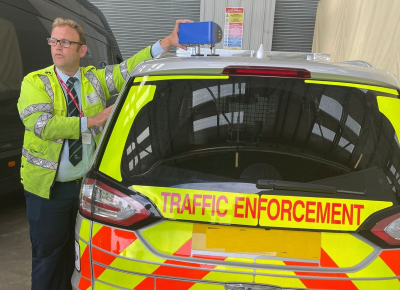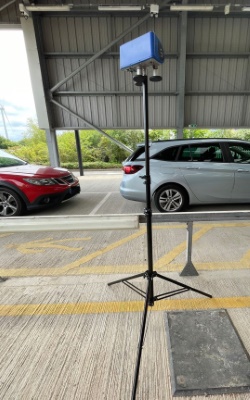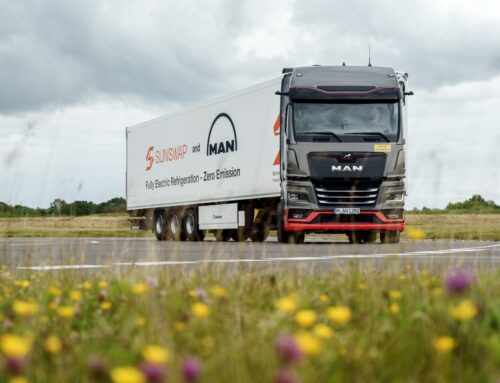DVSA issues update on remote tacho monitoring trial
The Driver & Vehicle Standards Agency (DVSA) has told Transport Operator that its current trial of remote tachograph sensing equipment (RTSE) at the roadside is set to continue to April 2023 under current plans, ahead of an overview of the analysis gleaned by the scheme to determine next steps.
The equipment is being moved periodically around the country, the agency says, to help build a picture of compliance levels and vehicle usage in individual areas, and enable local enforcement teams to gain hands-on experience with the technology.
The trial, which launched in August, has seen DVSA officers equipped with the RTSEs, which interface with the dedicated short-range communication (DSRC) technology on so-called smart tachographs.
This is understood to enable personnel to detect when a vehicle is in motion without a tachograph card inserted, whether the instrument is correctly calibrated, and whether it has been tampered with. The equipment can be set up in static configuration at the roadside, or mounted atop patrol vehicles.
Caroline Hicks, DVSA’s head of regulatory services and transformation, told Transport Operator that the agency had been keen to explore how the technology could be used to identify offences in vehicles equipped with smart tachos.
“The RTSE will help DVSA examiners to identify commercial vehicle drivers suspected of offences anywhere on the road network,” she said.
“It will also assist DVSA with identifying commercial vehicles operators posing a serious risk not only to themselves but other road users.
“DVSA is investing in new technology and transformational practices to support more flexible, efficient, and effective enforcement.
“Our ultimate aim is to always help keep Britain’s road users safe.”
While not all vehicles are currently fitted with smart tachograph technology, DVSA anticipates that in the future, they will be.
“This is why we are exploring this now,” explained Hicks.
“The current plan for the trial is that it will continue through to April 2023. We are also moving the RTSE equipment periodically across locations nationally to gauge compliance and expand staff experience of using the equipment.
“This geographical movement gives us an opportunity to gather data across different regions which may have different volumes and types of vehicles, posing different questions of the tools and the requirements of them.
“As we gather more insight, we will analyse our findings to help us to continue to develop how the equipment is used to best inform on, and improve, road safety to help prevent dangerous incidents.”
She continued: “On completion of the trial, we will build a complete overview of the analysis completed and consider the role this technology will have as part of our overall enforcement strategy.
“DVSA will continue to explore the latest technology available that will enable us to support safer roads, vehicles, and drivers.”
Earlier this year, on launching the scheme, DVSA advised drivers to ensure they understood their responsibilities as regards tachograph and drivers’ hours rules.
“Check your tachograph is working properly before you set off; take adequate rest; [and] correctly record your driving time and rest on your tachograph,” the agency advised.
It also called on HGV, PSV and LGV fleet operators to whom drivers’ hours rules applied to ensure their responsibilities as operators were understood and that tachograph equipment was maintained, as well as to make sure that drivers’ activities were adequately scheduled, and their compliance monitored.
“Listen and respond to any drivers’ hours concerns raised by your drivers,” said DVSA.
“If you commit a tachograph violation, it’s now easier for us to find you.”
DVSA has said the equipment is potentially game-changing, and enforcement bodies in several other European countries have been rolling out similar sensing technology.












